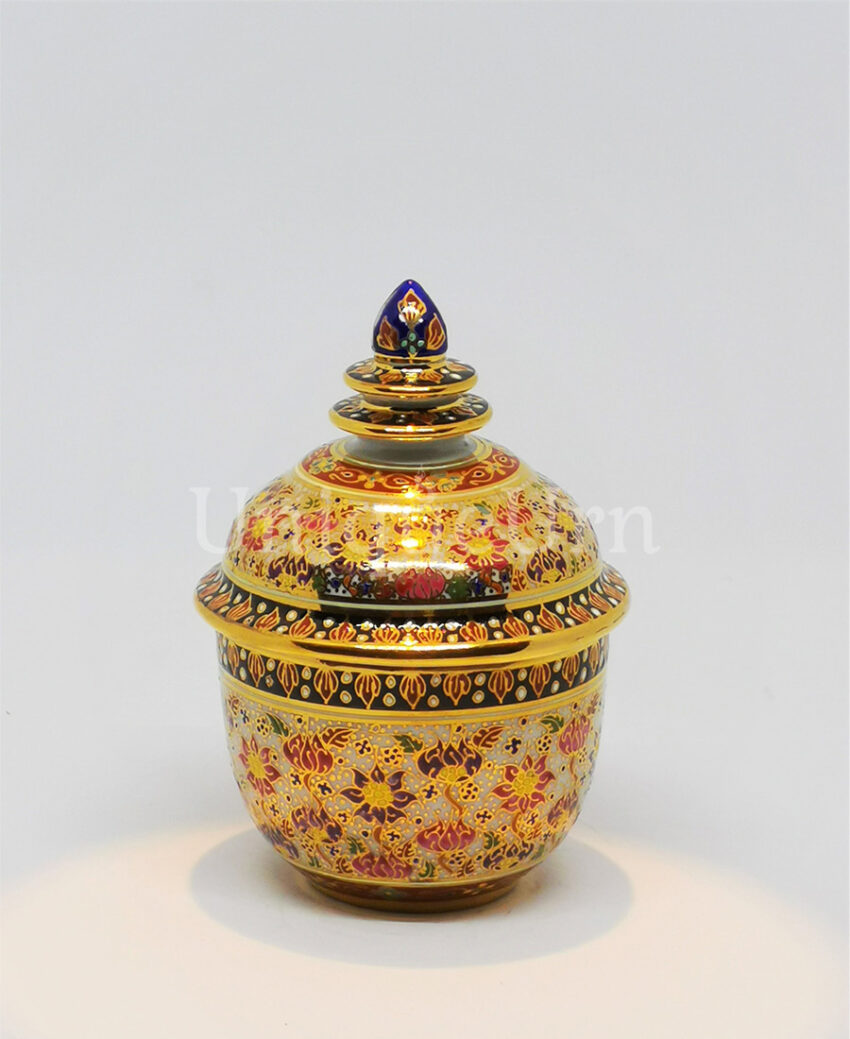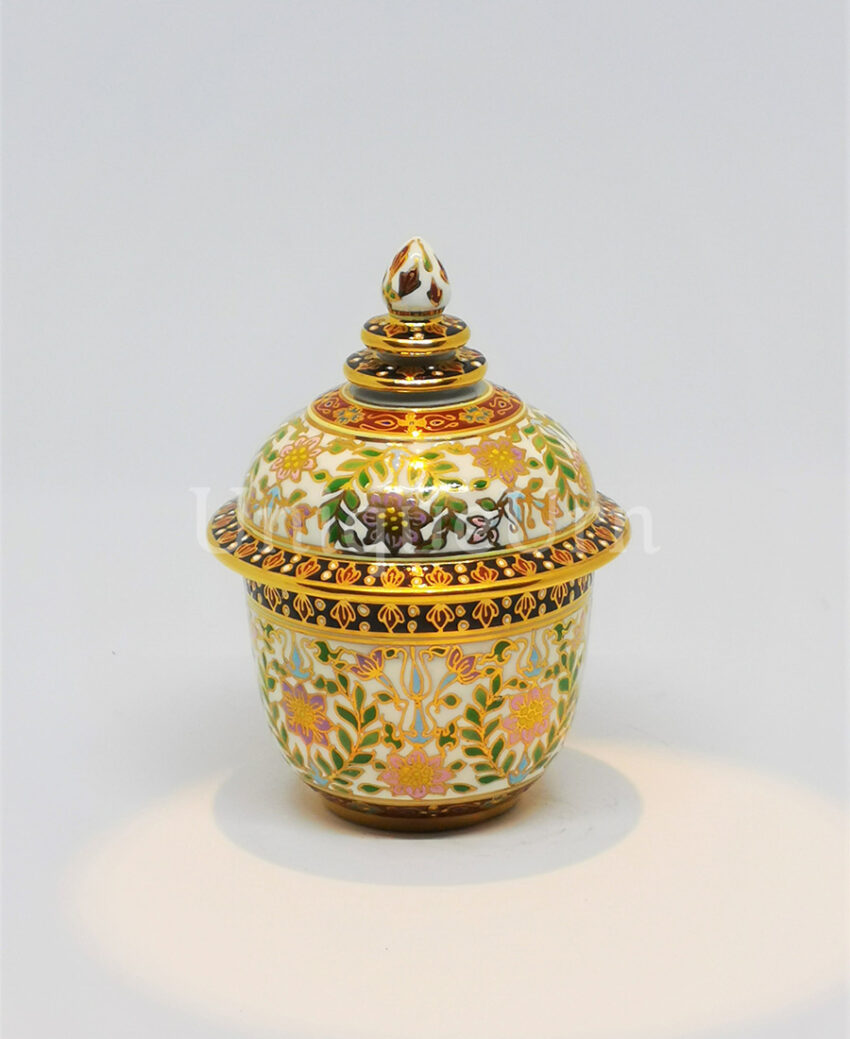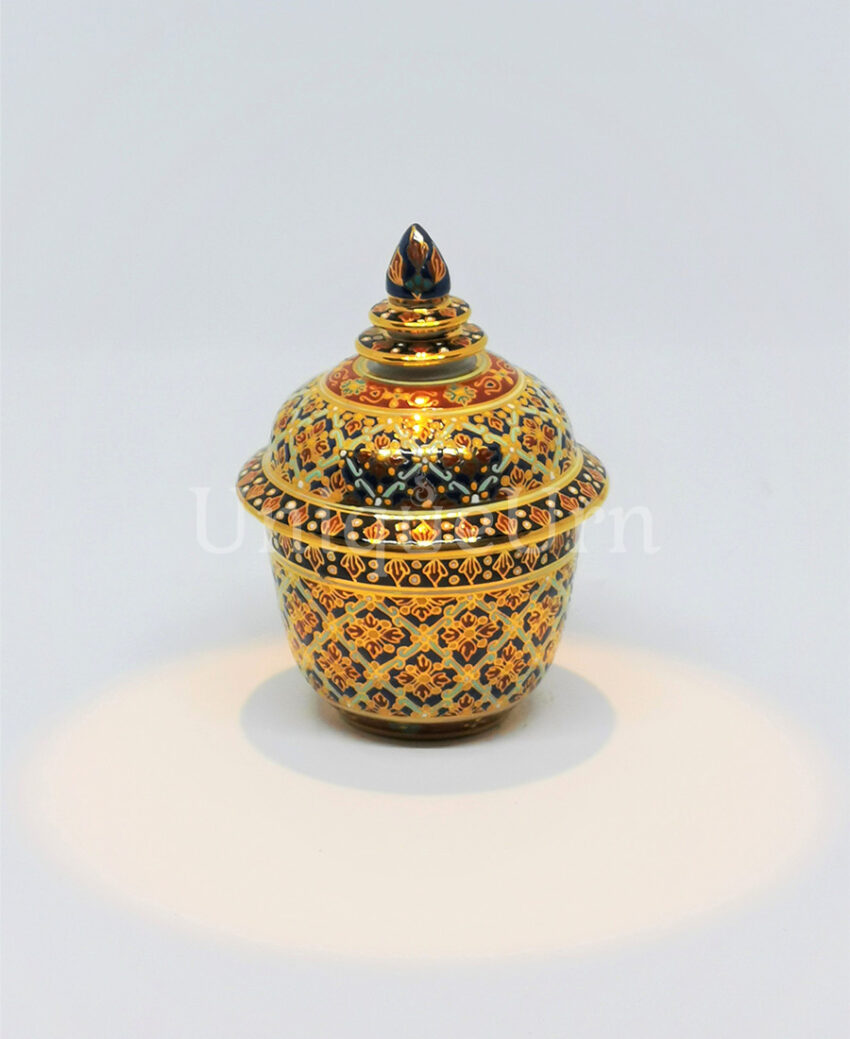ThoFudThong Covered Box Urn 3 inch Shiny Pikul
฿ 1,100.00
| Shape | ThoFudThong |
| Design | PiKul |
| Type | Shiny Porcelain |
| Dimension (cm.) | 8.3 W x 8.3 L x 4.8 H |
| Weight (kg.) | 0.17 kg. |
| Capacity | 3.00 cubic inches 48 ml. |
FudThong is a pumpkin covered box. The meaning of FudThong is quite auspicious as it was used as a form of wealth equivalent to gold. Therefore, Thai people often brought pumpkins to offer to Buddha for them to receive blessings of wealth, happiness, and good luck.
Formerly the small pumpkin box contained skincare and face powders used on the dressing tables of female consorts or was used as a miniature accessory box. Nowadays, this intricate decorative painted covered box can be used as the invaluable keepsake urns for containing a small portion of the loved ones as Thai people contain the lord Buddha’s bone ashes and the ancestors’ ashes for worship, remembrance, and memories.
PiKul design is flower notable for its fragrance and visual aesthetic. The pattern originated in the Reign of King Rama II (1809-1824). PiKul is a big tree often grown in temples. It has high strong stalks and its shape resembles and smells like Jasmine.
The painted design on the pieces inspires and creates a unique pattern, which has been reduced in size to that of the patterns painted on the walls and post of temples, including other important ancient places called “PraJamYam” (pattern fixed for auspices), which is the name of a pattern in the figure of a flower with 4 sparkle petals placed section by section and separated by other patterns. This is believed to be auspicious and guards against demons and to bring prosperity for those important places, i.e. north, south, east, and west. It creates peace and harmony in life.
The original PiKul flower pattern is based on the repetitive trellis technique from wooden vines and was developed to include various designs and colors as the PiKul KarnTor and PiKul SakKoRad design are replaced with tropical leaves motifs, even the PiKul KaJung and PiKul KarnLeam design are replaced with geometric forms of rectangle or rhombus shapes, but the PiKul Golden design minimizes the original size of the PiKul flower which is tiny for making the delicately unique design.
Packing & Shipping
Our professional packing process is including three layers. Firstly, we will wrap each piece with soft paper to protect from any scratch, then the pieces will be wrapped with layer of air bubble regard to broken prevention. Last, we will put them in cardboard boxes and surround them with polystyrene foam sheets to protect them from moving inside the big box. Then our shipment is ready to deliver.
Our UniqueUrn is cooperating with the professional shipping companies to arrange the exquisite items of art for your loved one to your hand in appropriate time. We guarantee the new pieces for replacement if your shipment item is broken during the transportation. By providing us the photos of the broken items and the package to us, so after claiming processed with the shipping company, we will replace the new one for you.





















